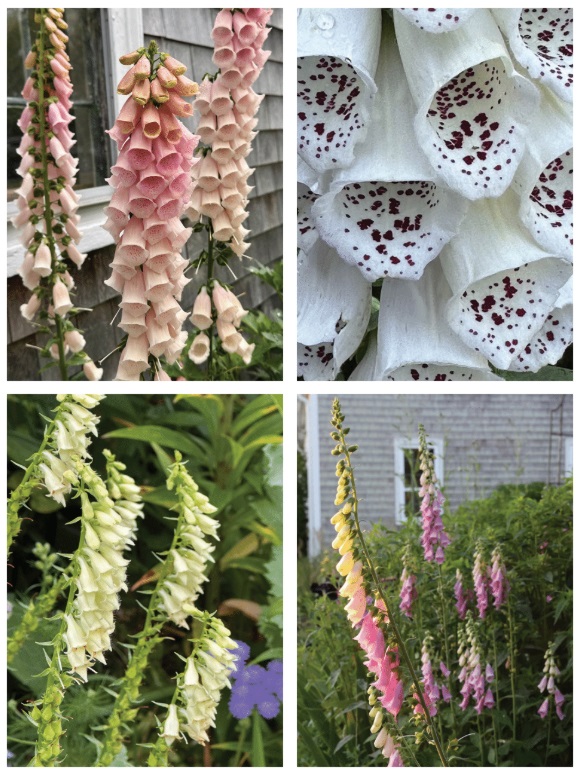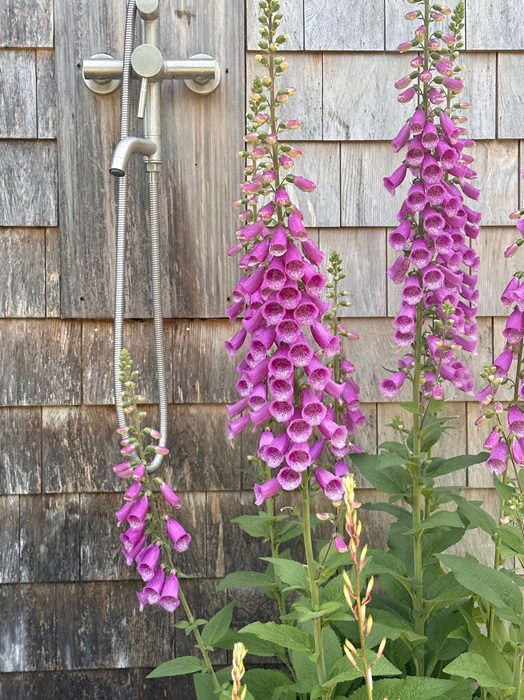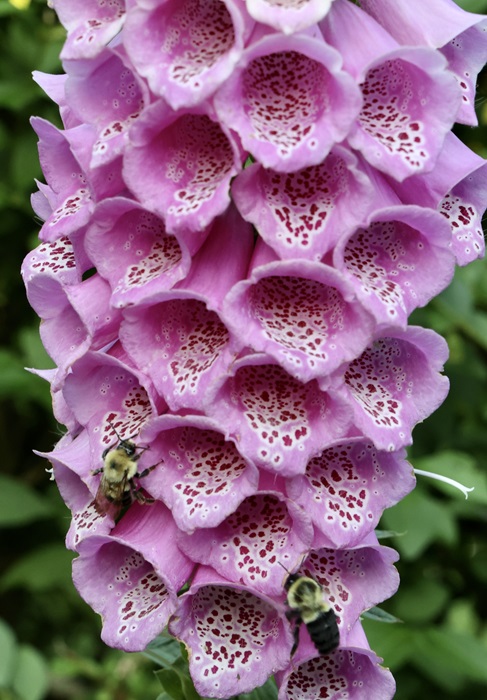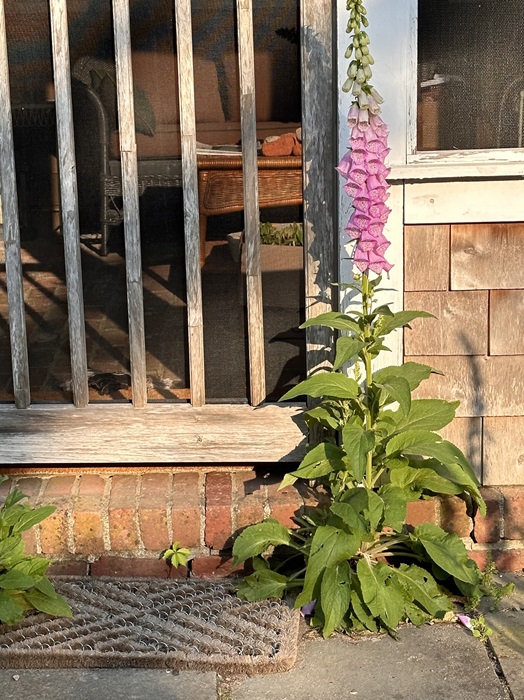Foxgloves have a sense of mystery about them — even their name is a subject of lore. They are, however, very easy to grow in a Cape Cod garden if you understand some of their basic needs and show a little patience about their unusual life cycle.

Both their common name and genus (Digitalis) refer to fingers. In English folklore of the 16th and 17th centuries, foxes slipped the flowers on as shoes before sneaking up on their prey. But I like the alternative suggestion from old sources that the name “foxglove” is a derivation of “folks-glove.” In this telling, the blossoms were thimbles worn by fairies.
Such “fae folks” were mischievous and sometimes evil beings, similar to gremlins or goblins who might set fire to things or steal a newborn. They were not the cute, charming sort of fairies we know from children’s tales, and nothing like Tinkerbell, though it’s true she could be a little vindictive.
I’ve always liked the ethereal look of foxgloves’ flower spires as they wave gracefully in the wind without breaking. I first grew them in a mossy, shady woodland garden in upstate New York, so I was surprised how easily they’ve taken to our sandy, sunny Truro yard. They are happy enough here that they create another mystery: they come back year after year, though we can only guess where they’ll turn up.
Most foxgloves are biennials, meaning they make low rosettes of leaves their first summer. Then they die back partially over the winter. The following June, they send up their bloom spikes, which in situations with richer soil and abundant irrigation, can grow to more than five feet tall.

Foxgloves’ biennial lifestyle means you have to wait a whole year for the flowers to appear. But once you have them, they self-seed readily if they approve of their setting. We usually harvest the seeds in July when the seedpods turn dry and brown and store them in a jar to start indoors in seed trays in the spring, and we also just scatter handfuls of them around. But they don’t always sprout where you remember having put them.
Last summer, my husband cut dozens of spent flower stalks and stripped the dried seeds on our back dining table so that he could store them. By the fall, almost every in-between space around the pavers had baby foxgloves sprouting up. This year, we have four-to-five-foot flowers popping up under the table, next to the foundation, blocking access to the screen door, and nudging us in the outdoor shower. It’s a pretty glorious inconvenience to navigate around them. Or it was until I was stung on the shoulder blade by a bee in the shower. But no harm: I’m not allergic, and my mom’s vinegar and baking soda poultice calmed the sting.
Pollinators seem to love foxgloves, particularly the bumblebees that waddle deep into the tubular flowers, staying for longer than you think they should before they emerge with their furry bodies covered in pollen.
Now is the best time to buy foxglove seeds. I’ve just ordered a new round to broaden my current collection, which includes the common pink foxglove (Digitalis purpurea) and a few more unusual colors like ‘Dalmation Peach,’ ‘Pam’s Choice’ (white with a plum-splotched throat), and ‘English Cottage Mix’ (pink, white, and pale yellow).

This summer’s order includes uncommon colors like the rusty foxglove (D. ferruginea) in a tawny brown, grayish-gold ‘Café Cream,’ dusky pink ‘Strawberry Cream,’ yellow foxglove (D. grandiflora), straw foxglove (D. lutea), D. thapsi ‘Spanish Peaks,’ which has longer flowers, and another brown one, D. parviflora ‘Milk Chocolate.’ Some of these varieties can be short-lived perennials blooming for two to three years.
I’m trying a new cultivation technique this year. Instead of scattering the seeds hither and yon and hoping for the best, I plan to sow them in a nursery bed, a bare patch of soil about the size of a twin bed, where only they will grow, and I can keep an eye on them. Once they come up, I will transplant the seedlings exactly where I need them.
Like fairies, foxgloves have a dark side. They are poisonous, so wear gloves when handling any part of the plant and be careful if you have small children around or if your pet is a plant nibbler. Our pup ignores them. The leaves are the original source of digitalis, a cardiac glycoside, used to treat heart failure. The liver-colored spots inside the bells of many foxgloves were once thought to relate to blood and lung disorders, such as tuberculosis, earning another folk nickname: bluidy-man’s fingers.

An 18th-century English doctor named William Withering discovered the drug’s positive effects on dropsy — an old-fashioned term for the edema that can be a result of congestive heart failure, but its narrow therapeutic dose is challenging to discern and control, so patients sometimes died under his treatment. Suffice it to say, don’t eat foxgloves.
In my situation, toxicity is not a reason to avoid growing this beautiful plant. Our gardens are full of poisonous species: yew, lily of the valley, daffodils, monkshood, azaleas, rhododendrons, baneberry, oleander, hellebores, columbines, brugmansia, datura, caladiums, larkspur, daphne. The list could go on. Best practices for adult humans would be to not make a habit of wandering around your garden eating random plants. But I do enjoy that deer and rabbits leave my foxgloves alone.
Folklore says if you see a foxglove stalk waving and its flowers nodding without any breeze, then you know one of the fae folks is in residence there. My recommendation would be to not get too close. Fairies of any sort can be extremely vengeful when caught by surprise.



